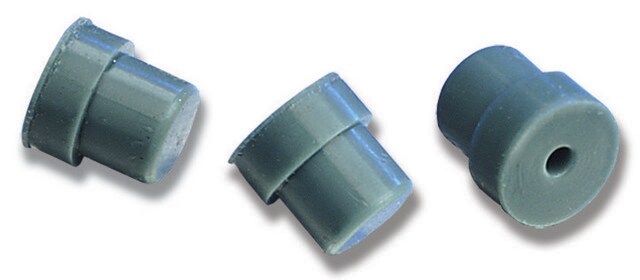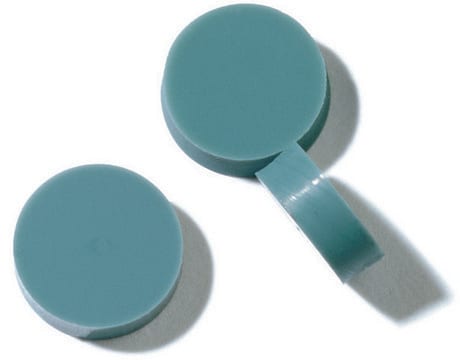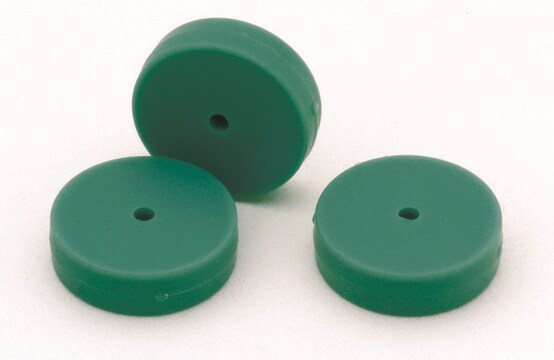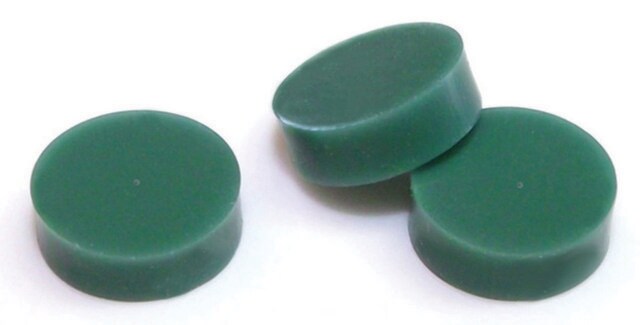20654
Thermogreen® LB-2 Septa, solid discs
diam. 11 mm ( 7/16 in.), pkg of 50 ea
Recommended Products
packaging
pkg of 50 ea
diam.
11 mm ( 7/16 in.)
compatibility
for use with Agilent/HP 5880, 5890, 6850, 6890
for use with PerkinElmer Sigma series, 900 & 990, 8000, AutoSystem, Clarus 500
for use with Varian 1078, 1079
for use with Varian SPI
for use with Varian capillary injectors
Looking for similar products? Visit Product Comparison Guide
Related Categories
General description
- Extremely low bleed over a wide range of inlet temperatures (100 °C to 350 °C)
- Already conditioned, ready to use
- Easier needle penetration and high puncture tolerance (ideal for autosamplers)
- Rubber formulation exclusive to Supelco
Application
- To minimize extraction onto or loss of analytes off the solid phase microextraction (SPME) fiber from the vial during analysis by GC-MS.
- Thermo-resistant septa is used in GC instrument to avoid carrier gas leaks, extraneous peaks and phthalate contamination.
- Thermo-resistant septa along with thick needle protector is used in GC instruments to avoid damage irreversibly caused by microsyringe.
- It is also used in the influent sampling ports in gas chromatographs.
Legal Information
Certificates of Analysis (COA)
Search for Certificates of Analysis (COA) by entering the products Lot/Batch Number. Lot and Batch Numbers can be found on a product’s label following the words ‘Lot’ or ‘Batch’.
Already Own This Product?
Documents related to the products that you have purchased in the past have been gathered in the Document Library for your convenience.
Difficulty Finding Your Product Or Lot/Batch Number?
How to Find the Product Number
Product numbers are combined with Pack Sizes/Quantity when displayed on the website (example: T1503-25G). Please make sure you enter ONLY the product number in the Product Number field (example: T1503).
Example:
Additional examples:
705578-5MG-PW
PL860-CGA/SHF-1EA
MMYOMAG-74K-13
1000309185
enter as 1.000309185)
Having trouble? Feel free to contact Technical Service for assistance.
How to Find a Lot/Batch Number for COA
Lot and Batch Numbers can be found on a product's label following the words 'Lot' or 'Batch'.
Aldrich Products
For a lot number such as TO09019TO, enter it as 09019TO (without the first two letters 'TO').
For a lot number with a filling-code such as 05427ES-021, enter it as 05427ES (without the filling-code '-021').
For a lot number with a filling-code such as STBB0728K9, enter it as STBB0728 without the filling-code 'K9'.
Not Finding What You Are Looking For?
In some cases, a COA may not be available online. If your search was unable to find the COA you can request one.
Our team of scientists has experience in all areas of research including Life Science, Material Science, Chemical Synthesis, Chromatography, Analytical and many others.
Contact Technical Service



